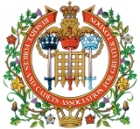No. 1 Special Communications Unit
In 1940, The British Army formed the first of the 12 Special Communications Units (SCUs). Their purpose was to provide direct links between individuals or small covert units with their headquarters. Such operations could find units many miles away from their headquarters in isolated terrain, possibly behind enemy lines.
Communication via the normal command network would incur unacceptable delays with subsequent effects on operations.
When the Territorial Army (TA) was reformed in May 1947, it was decided that there would still be a role for a Special Communications Unit in the Order of Battle of the new TA. No. 1 Special Communications Unit was formed on 1st May 1947. It only existed on paper. However, the first Commanding Officer was appointed in February 1948 with the priority to recruit suitable personnel and find TA Centre accommodation. The first accommodation consisted of a single room in Signal House – the TA Centre at 20 Atkins Road, Clapham, SW12. This was the home of 56th (London Infantry) Divisional Signal Regiment (TA). The sparse accommodation was unsuitable both in operational and recruiting terms.
The unit moved to Artillery House near Barnet, formerly used by the Government's radio security service. Although an improvement, Artillery House was not best placed for recruiting and after three months the Territorial Association offered premises at 89 Turnmill Street, EC1.
A trawl of people who had served in SCUs during the war produced 20 Officers and 15 other ranks, 6 of who were members of the Women's Royal Army Corps (WRAC). This group would form the training team for the first recruits to the unit, who were in the main ex-National Servicemen completing their obligatory service with the Territorial Army.
The Role of No. 1 Special Communications unit was:
- a. To provide communications between small field detachments using low powered hand speed Morse sets and static communication centres using medium power
- b. To provide radio teleprinter communication between static locations
In January 1954, the unit moved into the City of London Territorial Association TA Centre at Worship Street, EC2, a new building started pre-war in 1939 and completed in 1953.
In 1960, Detachments began to be sent overseas to training areas within NATO countries. This was at least six years before the average Territorial NATO unit could be sent on training overseas as a matter of routine. Several members of No.1 SCU were parachute trained.
The lineage of the unit was as follows:
The Special Communications role finished in 1990.
The Phantom Signal Regiment
As with the Special Communications units, Phantom Signals were specialist units created between 1939-45 with the aim of providing Army Commanders with accurate information as to the dispositions and activities of all the units under their command.
On the reformation of the TA on 1st May 1947, the War Office decided that there was still a need for a ‘Phantom' signals unit that should be within the orbit of the new TA.
The 1947 TA reforms called for some units to be re-roled and the Princess Louise's Kensington Regiment, based at the Drill Hall at 180 Hammersmith Road, would convert from an Infantry Battalion of the Middlesex Regiment to a new Signals Regiment to be known as Army Phantom Signals Regiment (Princess Louise's Kensington Regiment).
Pre-war and wartime Kensingtons who re-joined the new unit faced the challenge of changing their previous occupation as machine gunners to an entirely new role in signals. The situation was eased by a few ex-Phantoms familiar with the role joining the new Regiment. In 1961, the advances in modern signal systems made the role of the Phantom Signals Regiment redundant and the unit was re-designated 41 Signal Regiment Royal Corps of Signals (Princess Louise's Kensington Regiment).
